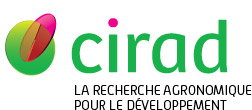Brait Nadja, Hackl Thomas, Morel Come, Exbrayat Antoni, Gutiérrez Serafin, Lequime Sebastian. 2024. A tale of caution: How endogenous viral elements affect virus discovery in transcriptomic data. Virus Evolution, 10 (1):vead088, 15 p.
|
Version publiée
- Anglais
Sous licence  . .
vead088.pdf Télécharger (12MB) | Prévisualisation |
Url - jeu de données - Entrepôt autre : https://figshare.com/projects/EVEs-bias-virus-discovery/185650
Résumé : Large-scale metagenomic and -transcriptomic studies have revolutionized our understanding of viral diversity and abundance. In contrast, endogenous viral elements (EVEs), remnants of viral sequences integrated into host genomes, have received limited attention in the context of virus discovery, especially in RNA-Seq data. EVEs resemble their original viruses, a challenge that makes distinguishing between active infections and integrated remnants difficult, affecting virus classification and biases downstream analyses. Here, we systematically assess the effects of EVEs on a prototypical virus discovery pipeline, evaluate their impact on data integrity and classification accuracy, and provide some recommendations for better practices. We examined EVEs and exogenous viral sequences linked to Orthomyxoviridae, a diverse family of negative-sense segmented RNA viruses, in 13 genomic and 538 transcriptomic datasets of Culicinae mosquitoes. Our analysis revealed a substantial number of viral sequences in transcriptomic datasets. However, a significant portion appeared not to be exogenous viruses but transcripts derived from EVEs. Distinguishing between transcribed EVEs and exogenous virus sequences was especially difficult in samples with low viral abundance. For example, three transcribed EVEs showed full-length segments, devoid of frameshift and nonsense mutations, exhibiting sufficient mean read depths that qualify them as exogenous virus hits. Mapping reads on a host genome containing EVEs before assembly somewhat alleviated the EVE burden, but it led to a drastic reduction of viral hits and reduced quality of assemblies, especially in regions of the viral genome relatively similar to EVEs. Our study highlights that our knowledge of the genetic diversity of viruses can be altered by the underestimated presence of EVEs in transcriptomic datasets, leading to false positives and altered or missing sequence information. Thus, recognizing and addressing the influence of EVEs in virus discovery pipelines will be key in enhancing our ability to capture the full spectrum of viral diversity.
Mots-clés Agrovoc : virologie, Orthomyxoviridae, séquence nucléotidique, virus, transcriptome, Aedes aegypti, génome, Culex quinquefasciatus, Culex pipiens, Aedes albopictus
Mots-clés libres : Endogenous viral element, Virus discovery, Orthomyxovirus, Mosquito
Classification Agris : L72 - Organismes nuisibles des animaux
L73 - Maladies des animaux
Champ stratégique Cirad : CTS 4 (2019-) - Santé des plantes, des animaux et des écosystèmes
Auteurs et affiliations
- Brait Nadja, University of Groningen (NLD)
- Hackl Thomas, University of Groningen (NLD)
- Morel Come, CIRAD-BIOS-UMR ASTRE (FRA)
-
Exbrayat Antoni, CIRAD-BIOS-UMR ASTRE (FRA)
 ORCID: 0000-0001-6682-0843
ORCID: 0000-0001-6682-0843
-
Gutiérrez Serafin, CIRAD-BIOS-UMR ASTRE (FRA)
 ORCID: 0000-0002-5277-7239
ORCID: 0000-0002-5277-7239
- Lequime Sebastian, University of Groningen (NLD) - auteur correspondant
Source : Cirad-Agritrop (https://agritrop.cirad.fr/612253/)
[ Page générée et mise en cache le 2025-10-03 ]




